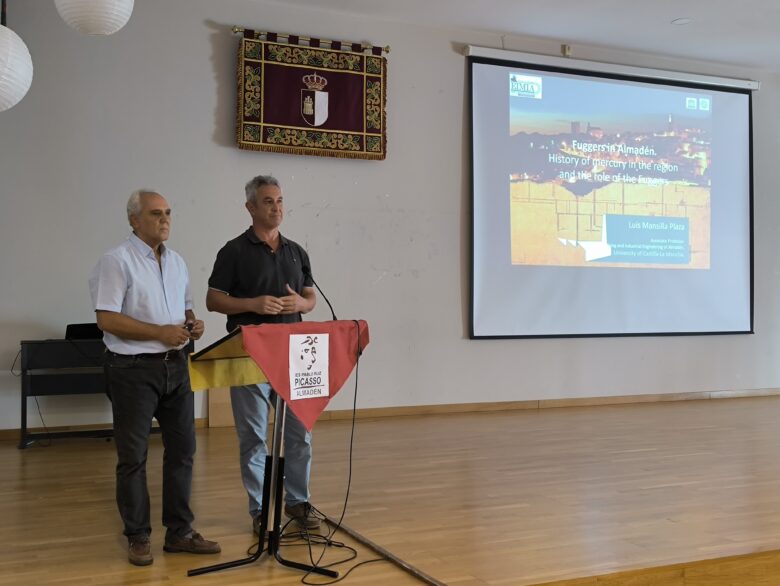The lecture of Luis Mansilla Plaza (University of Castilla-La Mancha) held at the IFYC25 at the IES Pablo Ruiz Picasso in Almadén explored the historical, geological, and cultural significance of mercury mining in Almadén, Spain—home to the world’s largest and oldest mercury deposit. Formed over 400 million years ago, the site has played a central role in global mercury production, supplying approximately 35% of all mercury used historically.
Almadén’s importance spans multiple eras: Roman urbanization, Visigothic religious activity, Islamic metallurgical innovation, and colonial expansion. During the Spanish conquest of the Americas, mercury from Almadén was vital for silver extraction, with the Fugger banking family managing its production and transatlantic distribution.
Industrialization in the 19th century brought technological advances, including hydraulic systems and deep shaft drilling, though labor conditions remained harsh. Forced labor and limited safety measures marked a dark chapter in the region’s mining history.
Today, Almadén is recognized as a UNESCO Global Geopark, preserving its legacy through archaeological sites, cultural heritage, and educational initiatives. The region’s story reflects the intersection of geology, economy, and human resilience, offering insights into the long-term impacts of industrialization and the importance of sustainable heritage preservation.
More information about mining in Almadén you can find in this scientifical publication called “ The Almadén Mercury Mining District“

